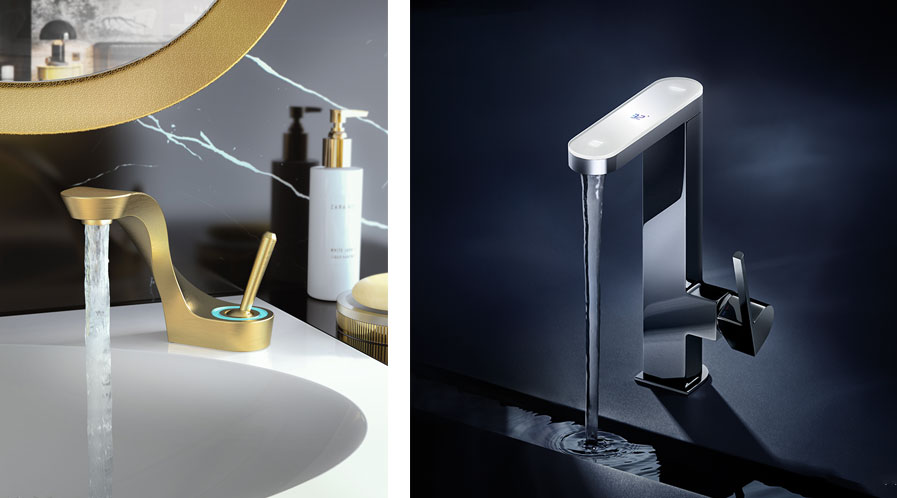It’s Time for Faucets to Go Digital!
The evolution of faucets technology, and the resultant emergence of digital faucets, is going to revolutionise the bath and the kitchen space, writes Mrinmoy Dey
The era of modern smart buildings is gaining prominence. The proliferation of the Internet of Things (IoT) is pushing the boundaries of next-gen technology now more than ever before. Not only do we see numerous smart appliances and innovations in new and existing structures, but their use in the bathroom space is redefining the future of bathrooms. Hygiene, convenience and individual luxury are driving innovations in the field.
The concept of a smart and connected home has really caught on the fancy of modern-day consumers. The concept of a connected home has been extended to the bathroom as well. Faucet technology has evolved over the past two decades, as upgrades designed for greater convenience, comfort, sustainability, and aesthetic impact have been incorporated into their design. Now, touchless and digital faucets are making their mark due to heightened health consciousness and wellness.
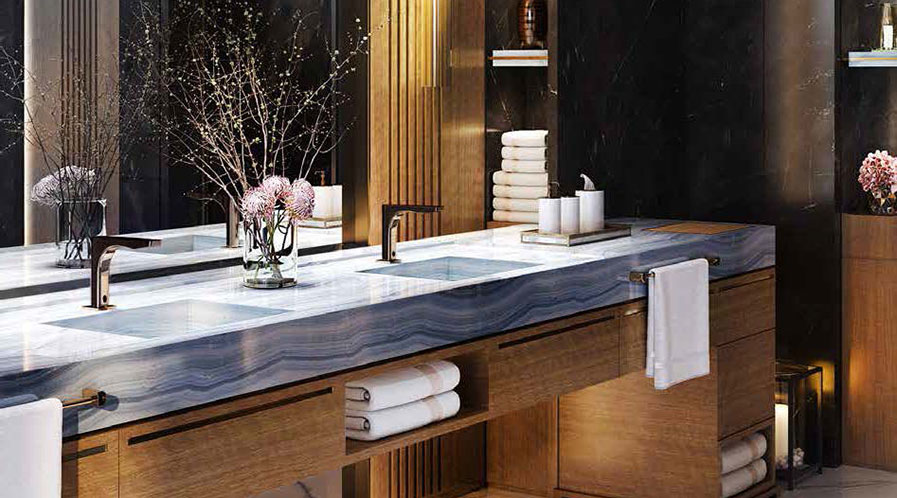
Advancement in faucets tech
In the past two decades, faucet technology has made significant advancements in terms of design, functionality and performance. From a typical tap to a bath and shower mixer to a manual diverter, faucets have evolved in the last two decades.
As a matter of fact, single lever diverters or manual diverters were considered a breakthrough in the past decade as it consumes less space and looks sleeker. With just a push of a button, the water flow can be diverted either to a shower head or to a spout.
“In the past, manual diverters were used to control the flow of water between different outlets, such as a shower head and a bathtub spout. However, these were replaced by thermostatic diverters, which use temperature-sensing technology to automatically regulate the water flow and temperature,” shares Abhinav Khandelwal, Managing Director of FCML India which is the retailer of Italian luxury faucet and shower brand Gessi in India.
Just with a touch of a button or audio recognition, Thermostatic diverters control the water temperature by mixing hot and cold water to a constant and predetermined temperature, distinguishing this type from others. The fundamental goal of this valve is to provide complete assurance and protection against unexpected changes in the water’s set temperature. This prevents scalding and cold shock, making it ideal for households with young children or senior citizens.

Ramesh Baliga
Executive Director, Watertec India
“Bathrooms now need products that are water saving, touchless and gadget controlled. Sanitaryware is already moving towards smart technology. Similarly, the basin area and also showers are now moving towards smart technology.”
Ramesh Baliga, Executive Director, Watertec India adds, “India has both the old and the new generation of people and the concept of common toilet is normal for a family. Now with a thermostatic diverter, one could control the flow of hot water which can be regulated manually. This was the first step towards innovation.”
Further, in recent years, there has been a growing focus on sustainability and environmental protection, and faucet manufacturers have responded by creating products with eco-friendly features. For example, low-flow faucets conserve water and reduce waste, while some faucets are made from recycled materials or have a finish that reduces the need for harsh cleaning chemicals.
Ziggy Kulig, Founder & CEO, Graff reiterates, “We have an innate commitment to sustainability in our faucet technology. Our faucets and showerheads include water-saving devices, and our thermostatic mixers use less hot water, thereby lowering energy consumption and carbon emissions. We recycle 100% of the brass, paper, and water used in manufacturing our fixtures and adhere to the strictest conservation standards. We are also one of the pioneers in eliminating any minimum lead residue from the water supplied through our faucets.”
He further adds, “State-of-the-art technology in harmony with exceptional aesthetics has evolved in faucet design, as seen with our Mod+ Collection of faucets. Mod+ offers Tuscan marble handles with a clip on the side which creates exemplary movement, while also offering a wide range of finish customisation possibilities.”
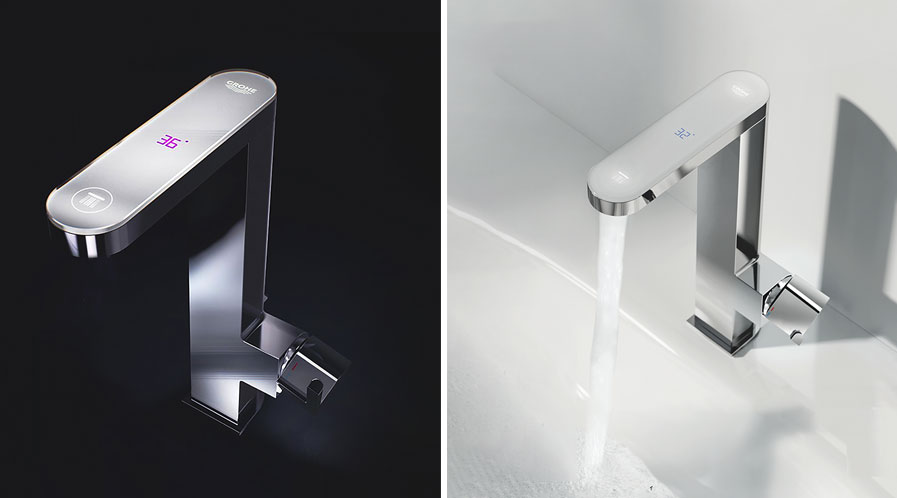
Faucets are becoming smart
Today’s intelligent bathrooms concept covers the Wash basin area, Shower area and WC area. When it comes to the basin area, the sensor faucets are available in various options. Similar to a smartphone, a smart faucet does some really cool things that one can program. “The most popular type of smart faucets is hands-free or touchless faucets that turn the water on and off using infrared technology triggered by motion sensors,” shares Baliga.
Another type of smart faucet that is now available is the 2-in-1 automatic faucet with soap dispenser. It has one spout with dual infrared sensors and two outlets. The side sensor is for soap, and the downward sensor is for water. It is equipped with an integrated design of a control box, including the solenoid valve and the soap pump.
The latest innovation in faucets is the digital faucet. These are more technologically advanced than hands-free faucets, as they contain digital displays that are controlled by a digital control panel. “Then, there are combination smart faucets that include features of both hands-free and digital faucets. Combination faucets cost more than touch-free and digital faucets, but they come with more features,” informs Baliga.

Abhinav Khandelwal
Managing Director, FCML India
“Today’s faucets can be integrated into smart home systems, allowing remote control and monitoring of water usage and temperature. This has made it easier to conserve water and energy while enhancing user experiences.”
Khandelwal adds, “The introduction of digital faucets has revolutionised the bathroom and kitchen experience. These faucets are equipped with electronic sensors that respond to hand movements, allowing hands-free operation and precise temperature control. They also often have built-in filtration systems and customisable settings, such as flow rate and temperature memory.”
He further states that many of today’s faucets can be integrated into smart home systems, allowing remote control and monitoring of water usage and temperature. “This has made it easier to conserve water and energy, as well as provide a more convenient and efficient user experience.”
Kulig agrees, “Smart faucets and showers offer benefits in the bathroom space via LED and digital technology, making it easier to personalise bath and shower experiences to one’s tastes. Graff has been at the forefront of these technologies, with a passion for innovation supported by engineering know-how and a deep heritage of European craftsmanship.”
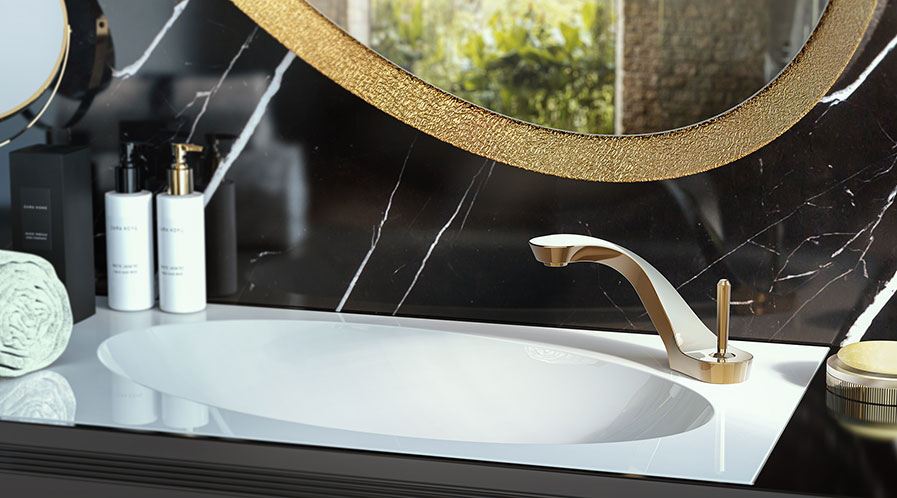
What is driving innovations in faucets?
Abhinav Khandelwal, MD, FCML India highlights the factors driving innovations in faucets technology
User Experience: One of the biggest drivers of innovation in bathroom faucets is the desire to improve the user experience. Faucet manufacturers are constantly looking for ways to make their products more convenient, intuitive, and enjoyable to use. This has led to the development of hands-free faucets, touch-activated faucets, and faucets with customisable settings.
Sustainability: As consumers become more conscious of the impact their actions have on the environment, manufacturers are responding by creating faucets that are more sustainable and eco-friendly. Low-flow faucets, for example, conserve water and reduce waste, while faucets made from recycled materials reduce the demand for new resources.
Technology Advancements: Another factor driving innovation in bathroom faucets is the advancement of technology. New sensors, digital controls, and smart home integration have made it possible to create faucets that are more accurate, responsive, and efficient than ever before.
Design: The appearance and style of bathroom faucets are also important factors driving innovation. Faucet manufacturers are constantly exploring new design trends and incorporating sleek and modern styles into their products to meet the changing preferences of consumers.
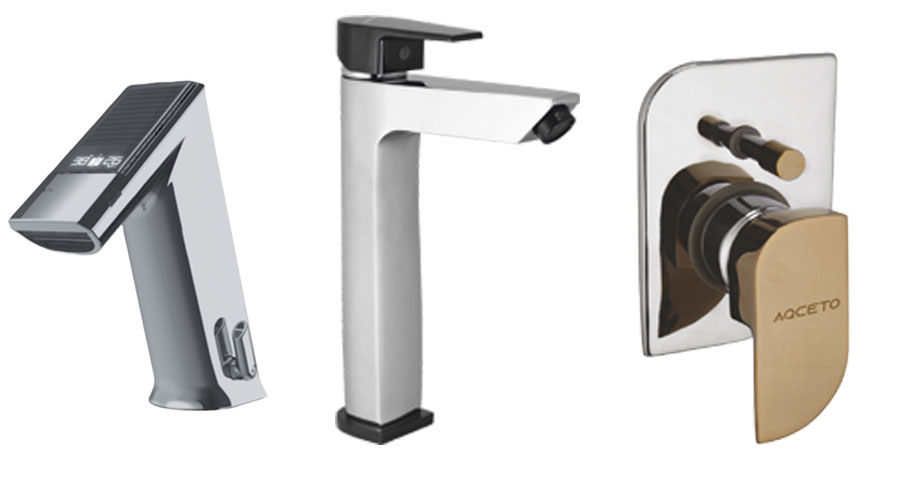
Digital faucets revolutionising the bath space
Gessi electronic taps are in the vanguard and come available with different technological solutions. The sensor can be incorporated into the tap body or the very spout; otherwise, it can fit into a proper remote plate. In the first two cases, the water flow is automatically switched on or off by bringing the hands towards the spout. In the case of the remote detector, the flow is activated or turned off simply by the hand crossing over the detector.
“The technology of the electronic taps by Gessi not only makes life easier but it’s also environment friendly. Thanks to the automatic activation of the flow, water is delivered only for the time it is actually needed,” asserts Khandelwal.
Talking about Watertec’s offerings in this segment, Baliga informs, “Watertec Diverters & electronic showers are available for commercial as well as residential sectors and across generations – Single lever diverters, Thermostatic diverters, Digital Diverters, Electronic Shower units. Teorema, Watertec’s global partner from Italy offers Thermostats and Conti+, our global partner from Switzerland offers Smart faucets, digital faucets and free-standing showers with electronic display and sensor operation.”
Ametis faucets collection from Graff includes a vessel sink faucet, a countertop sink faucet, a wall-mounted sink faucet and a bidet faucet, all in single-lever design, and in 3 finishes – polished chrome, black and white.
“The lever on / off handle is a modern touch that maintains the sleek, slender lines of the faucet. A LED light ring around the lever indicates water temperature changes. LED lights turn from blue to red and vice versa as the water temperature changes,” shares Kulig.

Ziggy Kulig
Founder & CEO, Graff
“Due to the increasing popularity of personalisation and wellness features, we predict strong demand in the Indian market for our Ametis faucets with LED lights and our smart shower technology.”
Grohe has recently introduced a digital faucet in India – the Grohe Plus Digital faucet. This innovative faucet puts control and convenience in the user’s hands with features like water-saving spray, LED display and temperature control allowing users to tailor water temperature precisely to their needs. Infrared sensor on the spout enables a touch-free experience switching from standard water flow to a water-saving function.
“The display changes colour from blue to red on a spectrum depending on water temperature for maximum safety. The 90° swivel spout on the Grohe Plus Digital faucet provides increased user comfort and flexibility. It turns smoothly to the left and right, adding a whole new level of convenience to the bathroom,” shared the company.
Is the market ready for digital faucets?
“With the advent of gadgets, electronics and technology-based products, Indian markets and consumers are now upgrading themselves to smart homes with automatic/ infrared/ sensor lighting, kitchen gadgets etc. The digital/smart faucet segment is on the upsurge in Tier 1 cities and Tier 2 cities will follow,” opines Baliga.
He predicts that India will have a progressive demand for digital /smart faucets in the future. “Bathrooms now need products that are water saving, touchless and gadget controlled. Sanitaryware is already moving towards smart technology. Similarly, the basin area and also showers are now moving towards smart technology.”
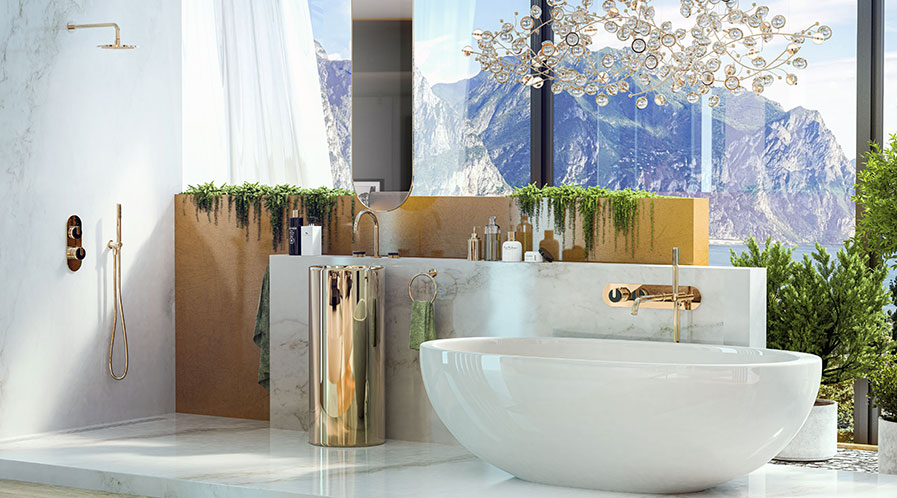
Kulig agrees, “Due to the increasing popularity of personalisation and wellness features, we predict strong demand in the Indian market for our Ametis faucets with LED lights and our smart shower technology.”
In India, we have new-age customers who have travelled worldwide and would like to use those smart technologies for their personal bathrooms. Hence, Metros and tier 1 cities are witnessing a surge in demand for these innovative and technology-based products. “It may be a slow and a small market at present, but the way the bathrooms are evolving, we are sure, the day would not be far away when Indian bathrooms will be digitally controlled,” opines Baliga further adding that Watertec is also working on affordable thermostatic and digital faucets which would be then available for Pan India markets be it metros, tier 1 and tier 2 cities.
Ultimately, people are investing more and spending more time in bathrooms. And, faucets are becoming a statement piece. Perhaps, the time is ripe for the faucets to dive into the digital realm.
Tags: Bathroom Faucets, Digital Faucets, Diverter, Smart Bathroom, Smart Faucets



